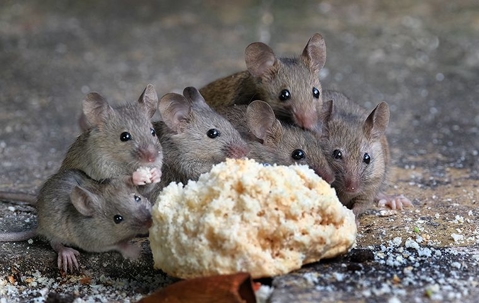Dealing with pesky mice can be an overwhelming challenge for homeowners. Yet, ensuring a rodent-free environment is crucial for establishing a healthy home. Fortunately, implementing effective mouse control in Laredo doesn't have to be complicated.
In this guide, we will offer you proven strategies to eliminate these unwelcome visitors from your home. Whether battling a minor infestation or seeking preventative measures, our step-by-step approach will empower you to tackle the issue head-on.
First, Identify That You Have A Mouse Problem
Before embarking on eradication measures, it's vital to ensure that mice are indeed the culprits. Often, the first clue homeowners notice is mouse droppings; they'll look like tiny, dark pellets scattered around. These droppings are usually in cupboards, behind appliances, or near food sources.
Apart from droppings, gnaw marks on food packaging or furniture, sounds of scurrying in walls or ceilings during the night, and even a distinctive musty odor can be indicative signs. Discovering nests made of shredded paper or fabric in secluded corners is another common indicator.
Once you've positively identified any of these signs, you'll be better equipped to take the next steps toward effective mouse control.
Next, Understand That Mice Are Dangerous, And You Need To Be Careful
Many mistakenly view mice as merely annoying pests. However, beyond their propensity to invade homes and nibble on belongings, mice can pose significant health risks. They carry diseases like hantavirus, salmonellosis, and leptospirosis, which they can transmit to humans through their droppings, urine, or bites. Additionally, their gnawing habits can damage electrical wires, potentially causing fires.
As you move forward to get rid of mice, remember to handle them cautiously. Avoid direct contact with them or their droppings, and always wash your hands thoroughly after any cleanup or extermination tasks. Prioritizing safety ensures you effectively tackle the infestation while minimizing risks to your household.
Call The Professionals Right Away For Safe And Effective Mouse Removal
While handling a mouse problem on your own may seem tempting, enlisting the expertise of seasoned professionals like EnviroGuard ensures that mouse control is thorough and lasting. Our experts have the training to assess the severity of infestations, pinpoint entry points, and deploy tailored strategies. Not only does this approach guarantee safety, but it's also often the best way to get rid of mice permanently.
At EnviroGuard, we utilize industry-leading techniques and tools that provide results surpassing typical home remedies. When you face a mouse problem, taking swift action and turning to our specialists can offer a sense of ease and a rodent-free home.
The Last Step Is To Prevent The Mice From Coming Back
Successfully removing mice from your home is an accomplishment, but the battle isn't over just yet. Ensuring they don't return is paramount. EnviroGuard recommends homeowners adopt several preventative measures to fortify their homes against future infestations. Here's a strategic approach to making your home uninviting to these pesky rodents:
- Seal Entry Points: Regularly inspect your home's exterior for gaps or holes, and seal them promptly, as mice often enter through these tiny entry points.
- Maintain Cleanliness: Regularly clean your living spaces, ensuring no food crumbs are left around. Store your food in sealed containers.
- Trim Vegetation: Keep shrubbery and trees trimmed back from your home. Thick vegetation provides mice with hiding spots and bridges to enter your home.
- Use Repellents: Consider using natural repellents like peppermint oil in vulnerable areas.
- Routine Inspections: Schedule periodic inspections with professionals at EnviroGuard. Proactive mouse removal steps can catch potential infestations early.
By diligently following these guidelines, you can significantly reduce the likelihood of another mouse invasion.

